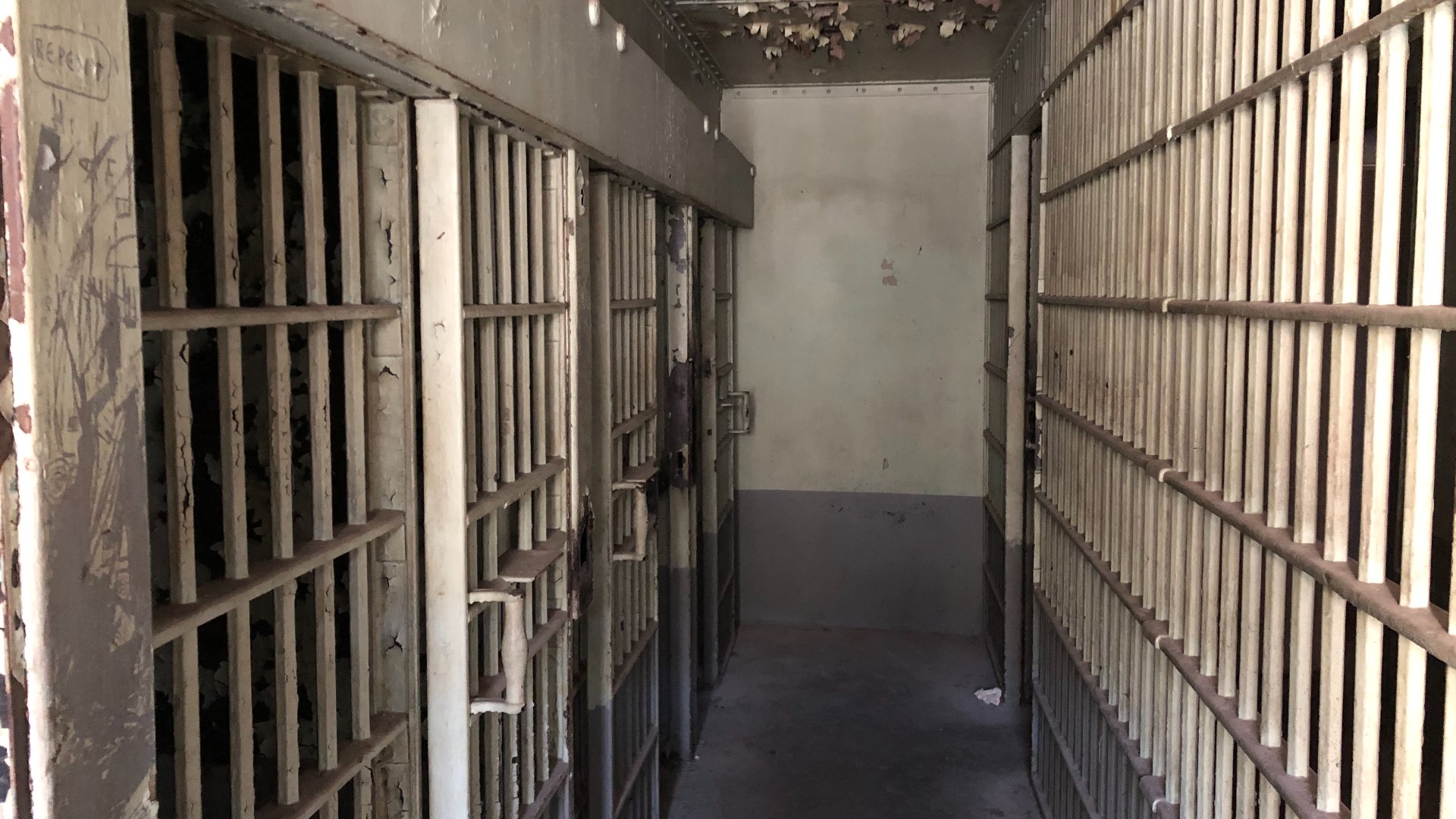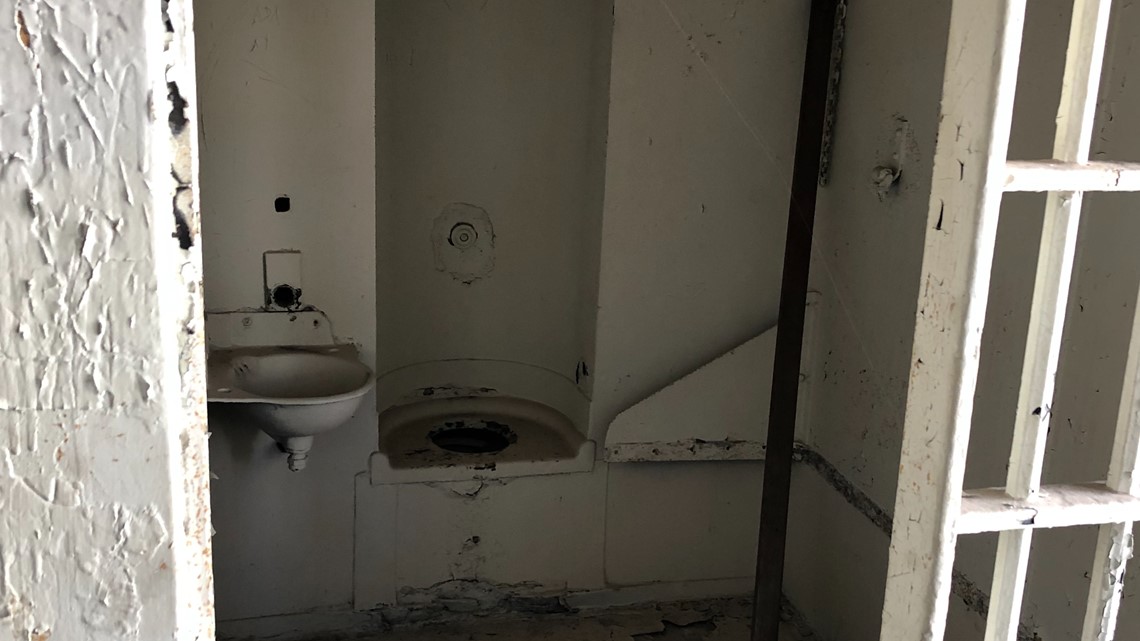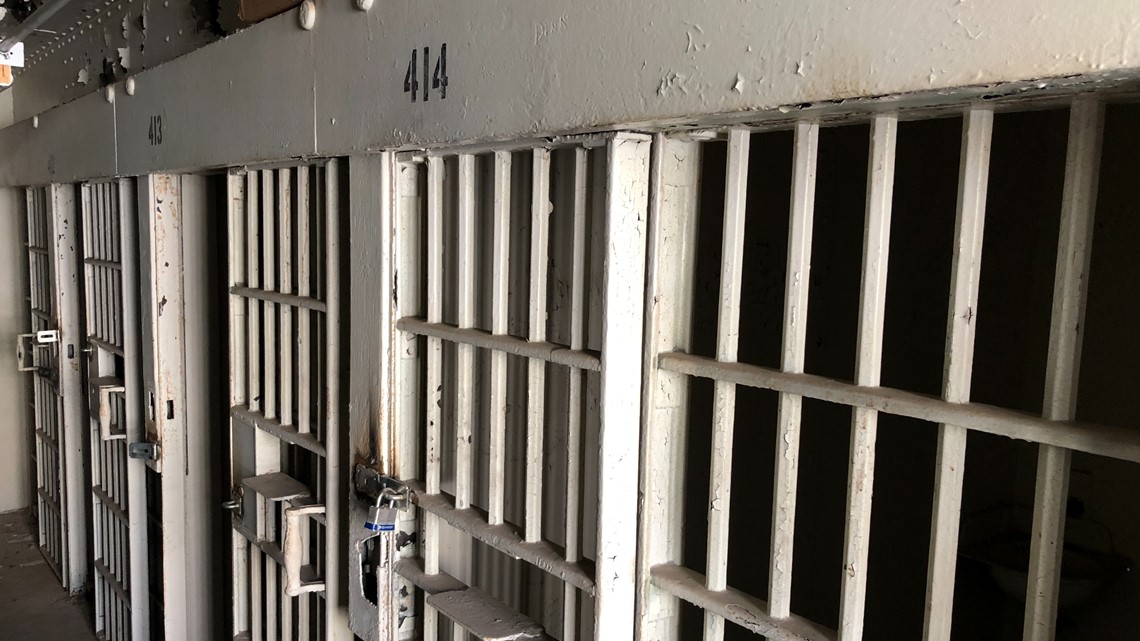The old Mecklenburg County Jail ceased operations in the late 1960s. Here's a rare look inside
District Attorney Spencer Merriweather took us on a tour, showing where we've come from and the work still needed to improve our justice system.

The old Mecklenburg County Jail still stands stuck in time atop the historic county courthouse in Uptown.
If the jail cells could talk, they'd certainly have tragic, painful and perhaps revealing stories to tell.
'This is a relic at this point'
The historic Mecklenburg County Courthouse is just off East Trade street. It opened in March of 1928. It's been remodeled over the years and is still a place where prosecutors work on the lower floors.
A ride on the elevator to the fourth floor is like riding in a time machine. The top two floors remain untouched compared to the modern facelifts the lower floors have received.
Step out into the top floors of the building and it's like stepping into an old, dusty attic. As soon as you turn a corner, the eeriness hits you with the weight of the old cell bars.
"This is a relic at this point," District Attorney Spencer Merriweather said.
He took WCNC Charlotte on a tour of the rarely visited jail. The public isn't allowed inside as the conditions aren't the safest nor healthiest. We were accompanied by a structural engineer and told where we could and could not go.
Lead paint peels off every wall and hangs, barely attached, to the ceiling.
There are small cells and larger cells, and a couple of common areas where former inmates could talk with their attorneys and eat.
'That certainly is not a humane atmosphere'
For all of its existence, the jail was racially segregated.
"A particular end for white inmates and inmates of color," Merriweather explains.
The cells are dark and dingy. The only lights that enter the cells are the streaks of sunlight that peer through the windows on the floor's perimeter.
The cells could hold approximately 170 inmates when it was in operation, according to a spokesperson for the D.A.'s office.
Some cells housed eight people inside their tight quarters with one toilet for them to share. There was no air conditioning in the sweltering summer and no heat in freezing winter, according to Merriweather.


"That certainly is not a humane atmosphere in which anyone should be waiting for their day in court," he said.
The silence is deafened by the art and writings on the walls that were left behind by those who spent time behind bars in the jail.
Some left their names, marking the dark time in their lives. Others counted down the days they had left to serve.
"You can sort of take a sweep through history here," Merriweather said as he walked by art on the walls. "You've got certainly a representation of the Black Power movement."
"The society outside of these walls certainly permeated what went on in here," he added.
The jail ceased operations in the late 1960s.
'I was overwhelmed at what I saw'
Commissioner Pat Cotham remembers the first time she saw these painful yet hallowed grounds. Former D.A. Andrew Murray asked if she wanted to see something interesting when she was a newly-elected commissioner and touring the building.
"He took me up a really creepy set of stairs," she remembered. "And I really didn't know where I was going. And then, here I was."
She remembers the pain she felt.
"I was overwhelmed at what I saw," Cotham said.
She still knows families whose relatives were put behind bars in the jail -- families that also paid a price, Cotham said.
"When someone in the family goes to prison, the whole family goes to prison -- the whole family is affected," she said.


It's still true today, a half-century since the jail closed. Merriweather knows the justice system has come a long way but is focused on the challenges ahead.
"There is some hope that we're always moving forward. We should never go back to this again," he said as he made reference to the cells behind him. "And my hope is we will constantly be moving forward -- recognizing the humanity of every single person who comes through our courthouses."
There are no future plans for the old jail. Peeling lead paint and steel doors could cost a fortune for any preservation attempts.
Contact Hunter Sáenz at hsaenz@wcnc.com and follow him on Facebook, Twitter and Instagram.
ALSO ON WCNC CHARLOTTE: Iconic Uptown Charlotte mural helps to highlight the Black experience of the past and present
ALSO ON WCNC CHARLOTTE: 'You can feel the history' | Charlotte building continues support of Black upward mobility, 100 years later


